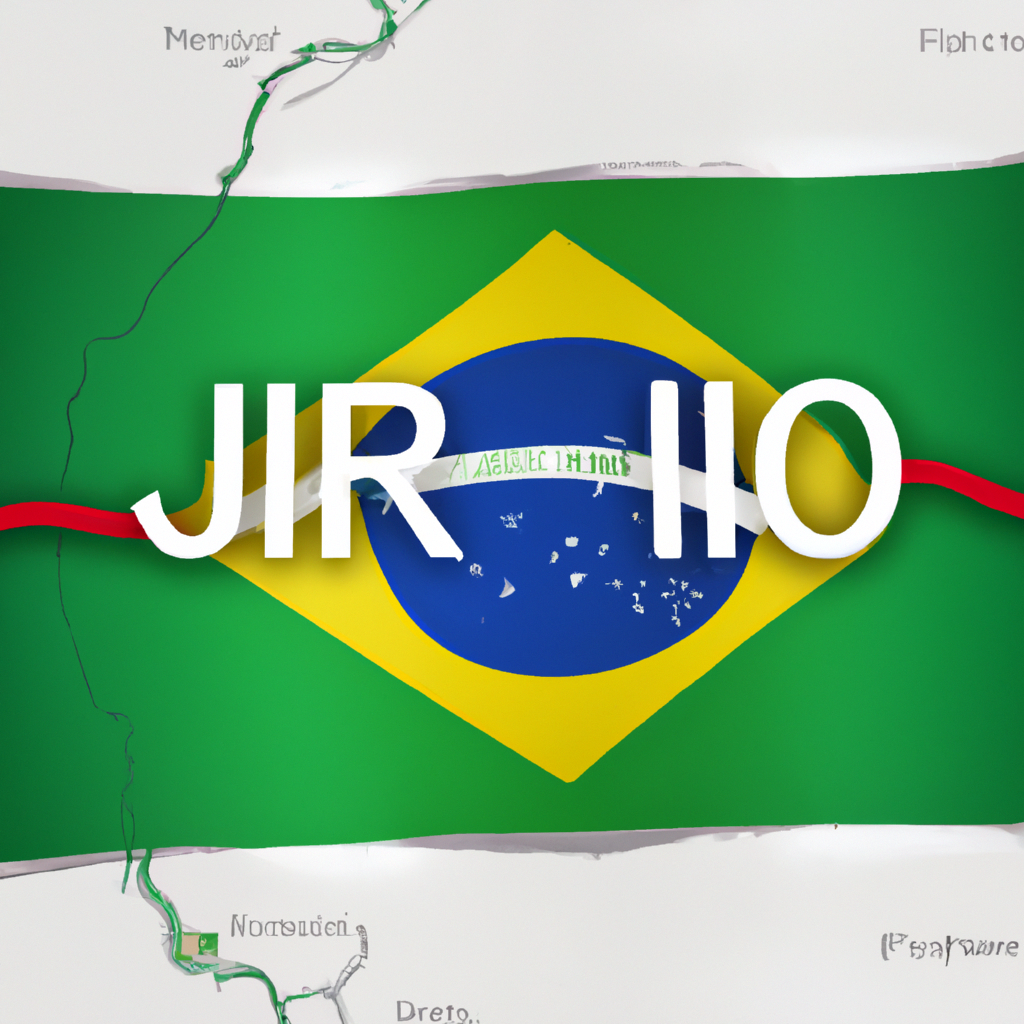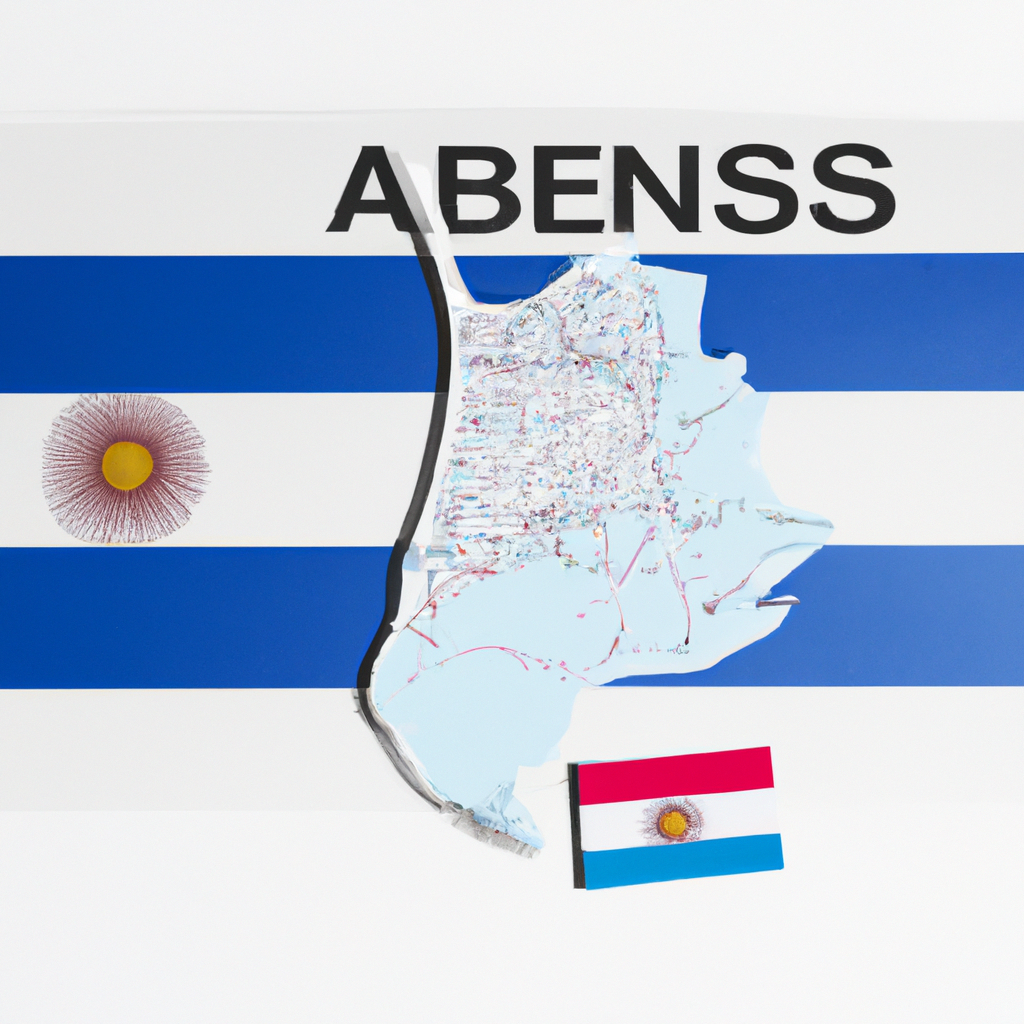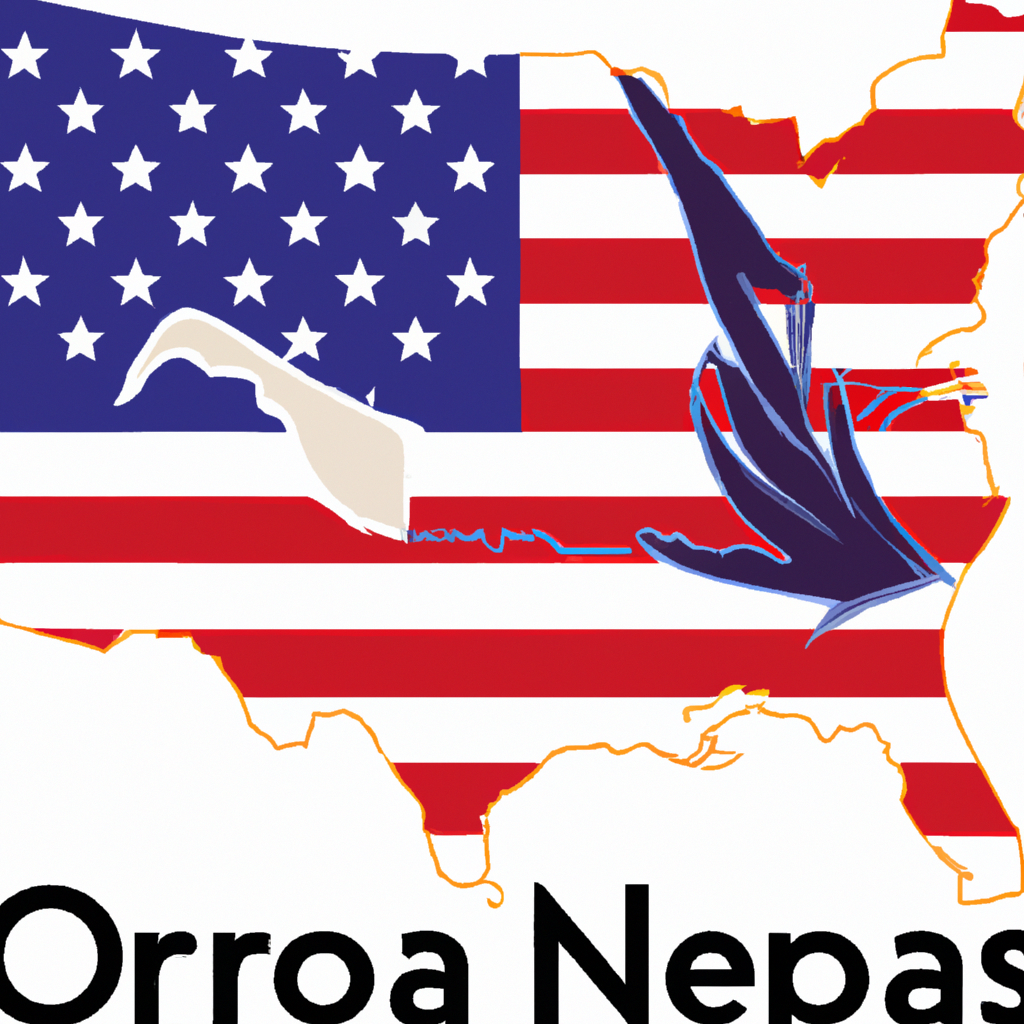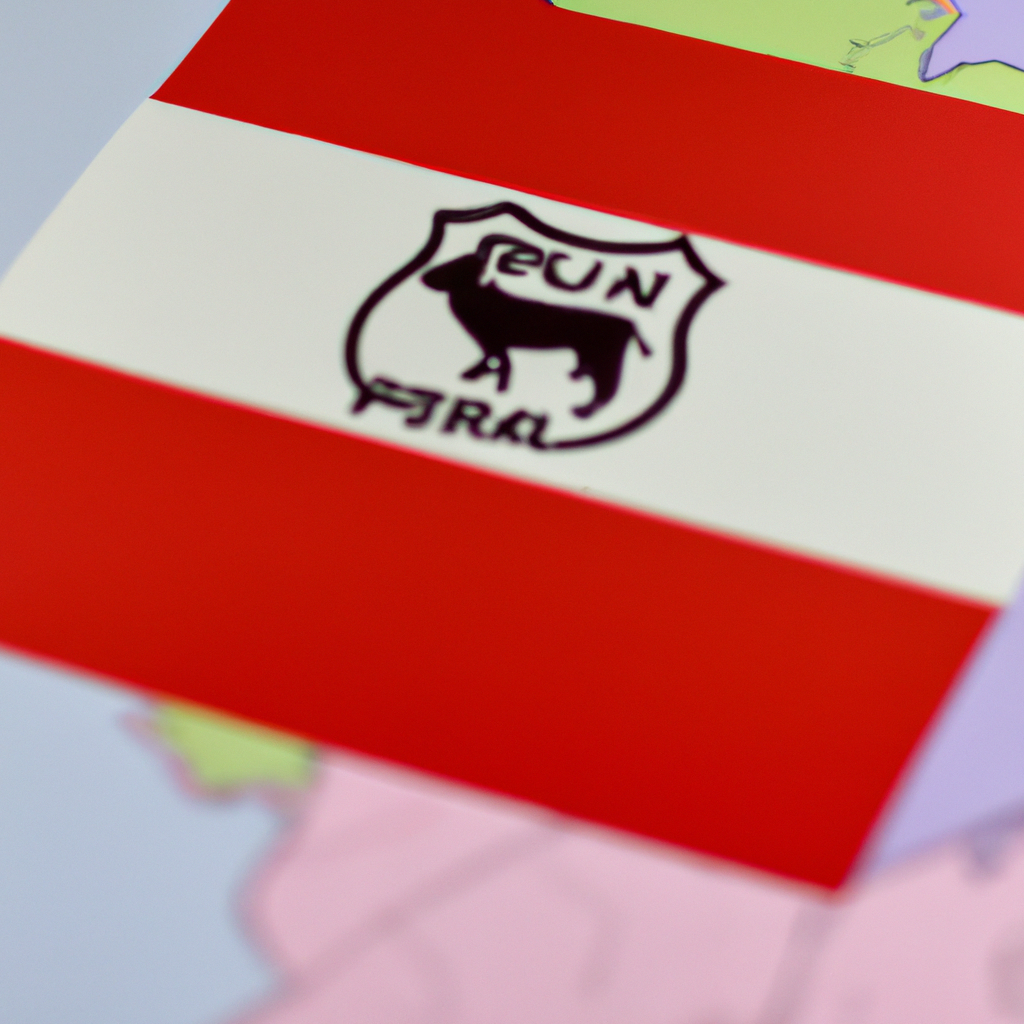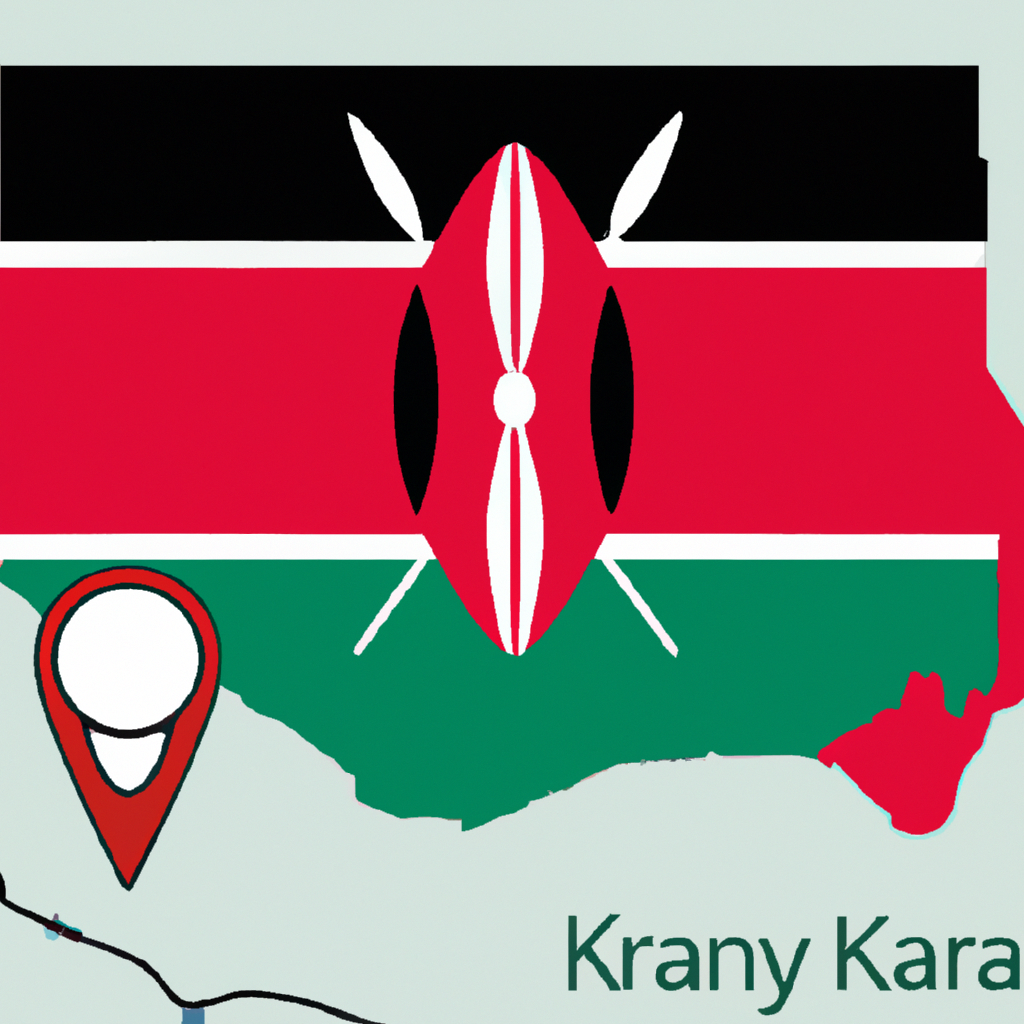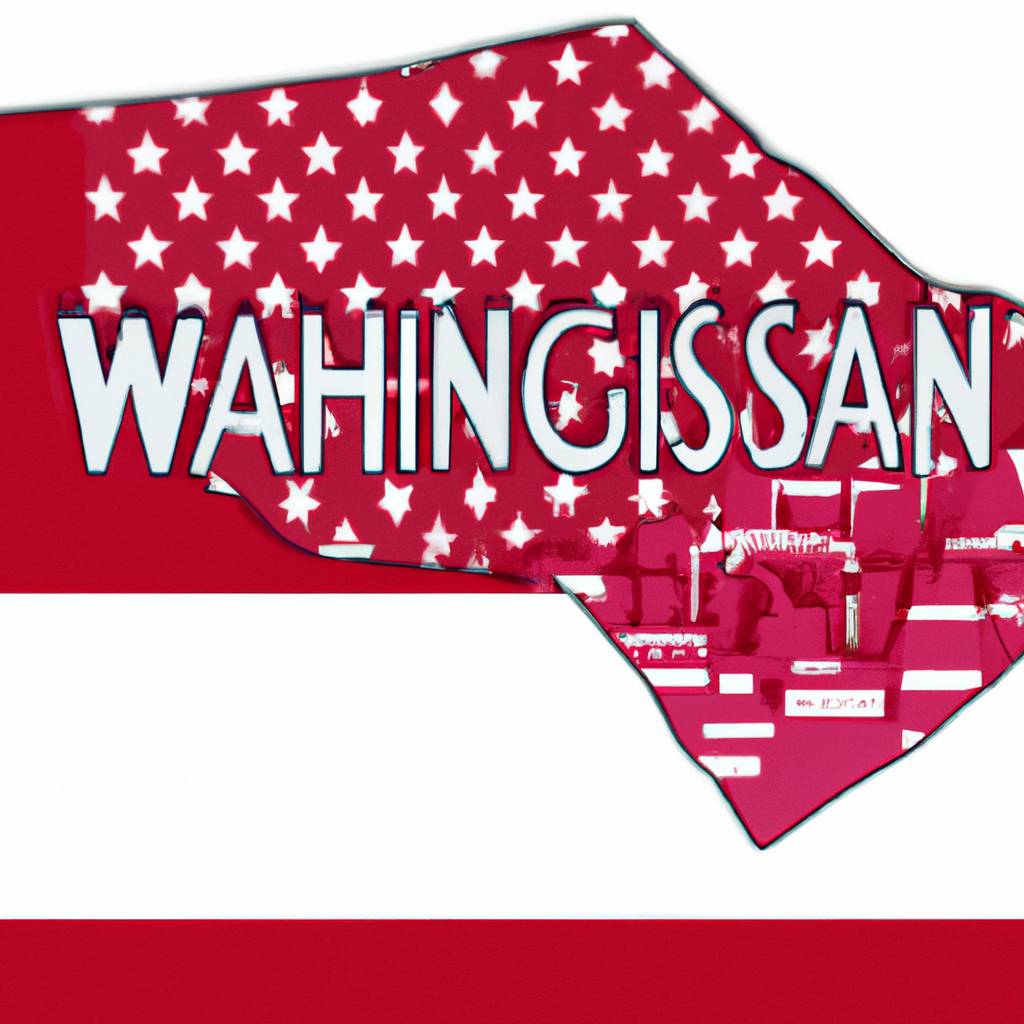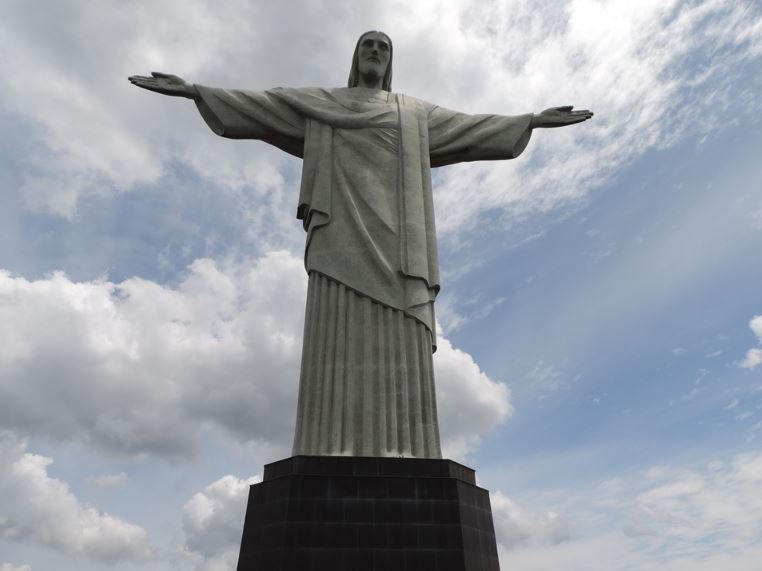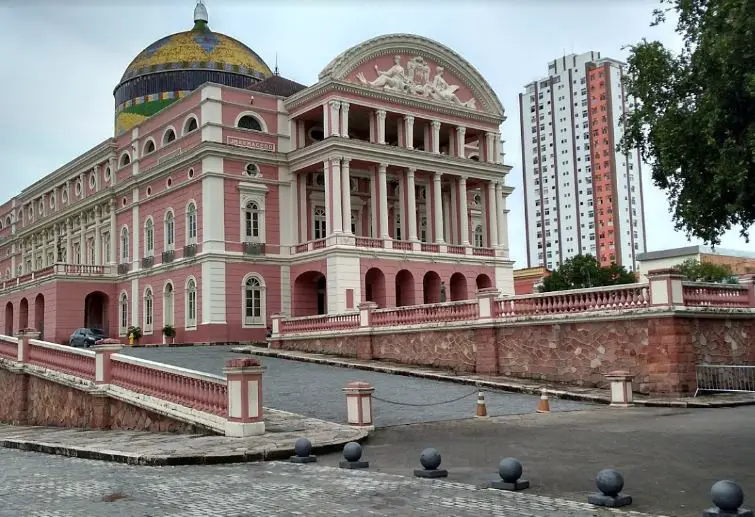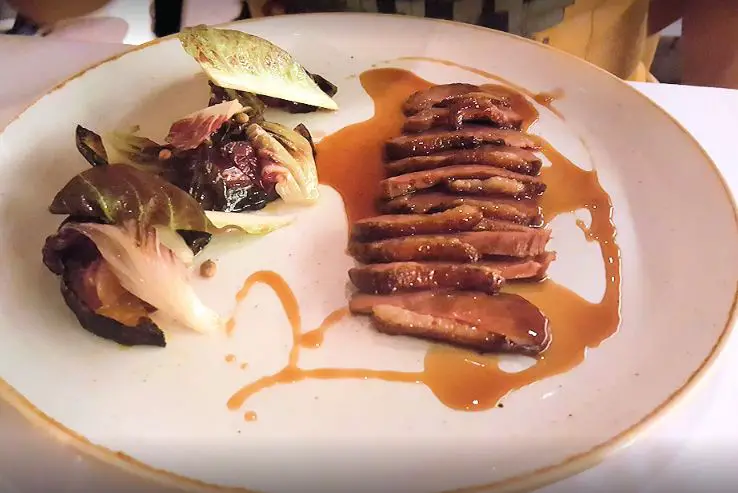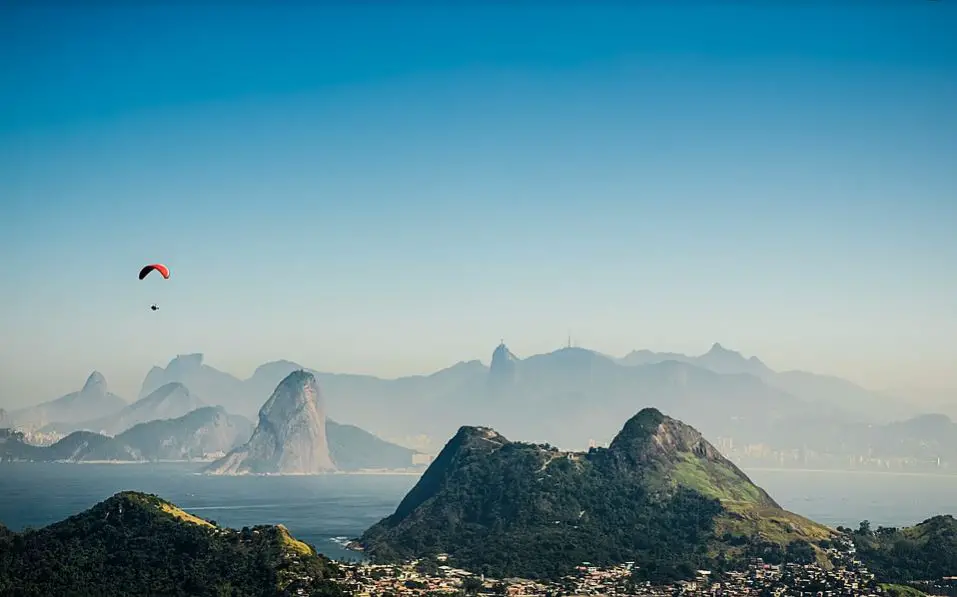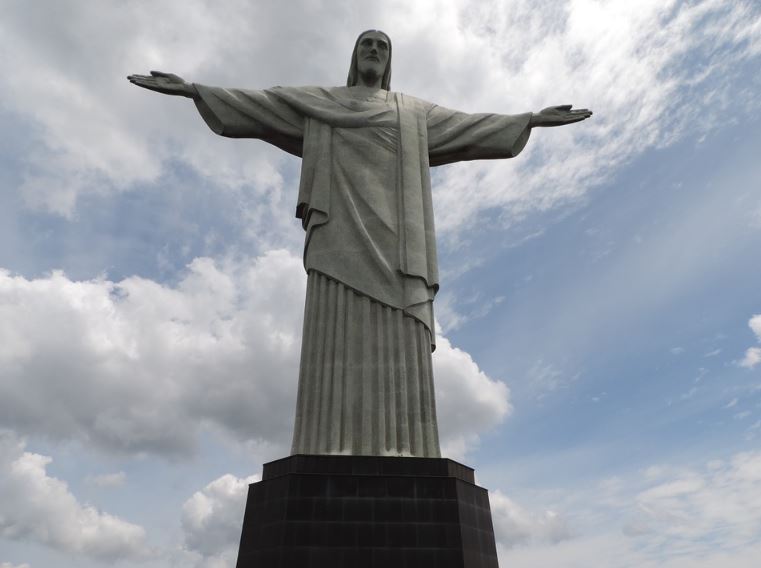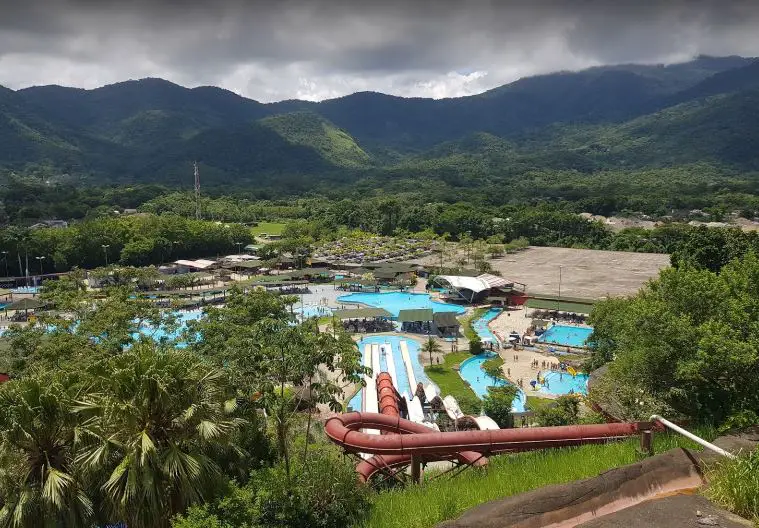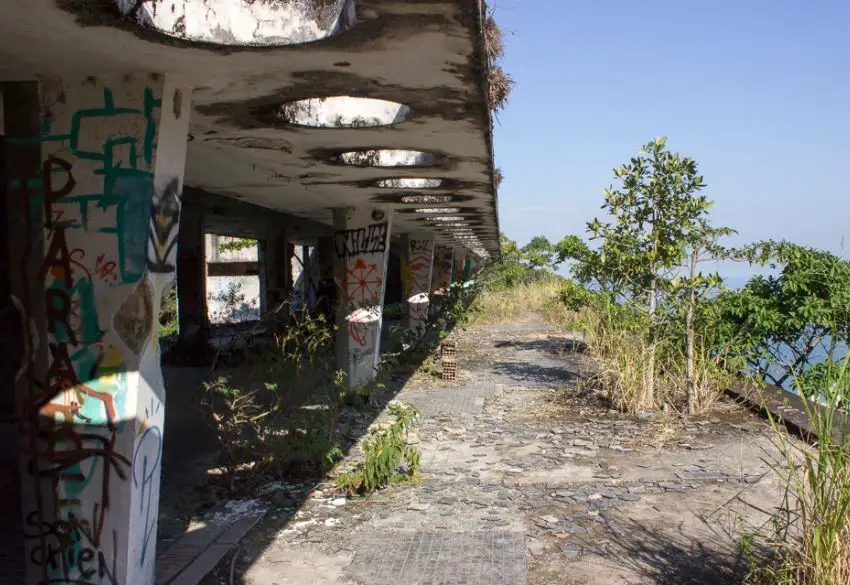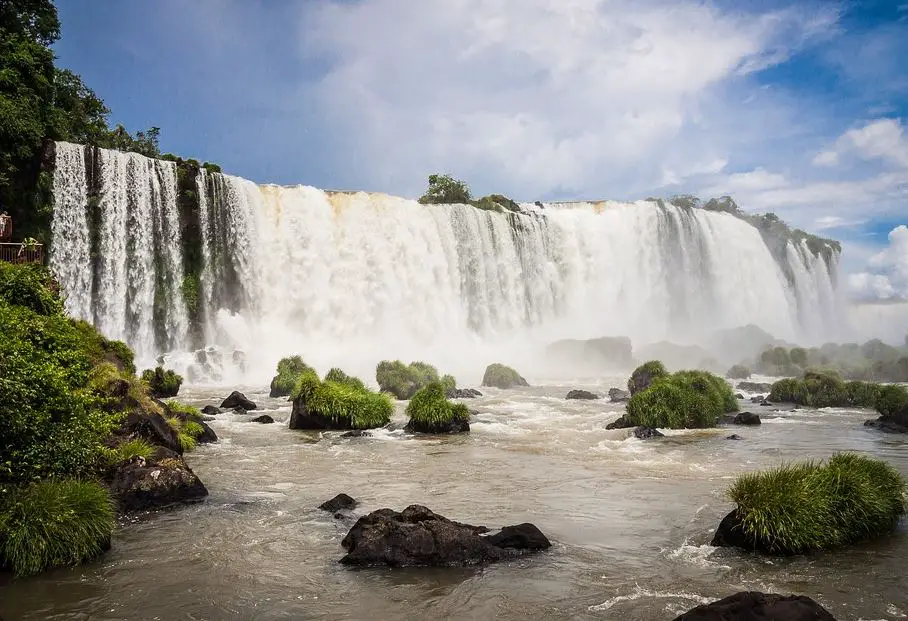Rio de Janeiro, Brazil: Interesting Facts,History, Things to do,Why to Visit
Post ByAdequate Travel
Rio de Janeiro, Brazil is a city known for its warm beaches, vibrant culture, and stunning landscape. It's one of the most visited cities in the world, and for good reason. From the iconic Christ the Redeemer statue to the breath-taking architecture and impressive cityscape, Rio de Janeiro is a destination like no other. Uncover the city's fascinating history, or take in the natural beauty with a day trip to nearby mountains, parks, and beaches. Whether you are looking for unique things to do, or interesting facts, the possibilities are endless in Rio de Janeiro. From historic monuments to nature offerings and incredible nightlife, your trip to Rio de Janeiro is sure to be memorable. Discover why this Brazilian gem will stay with you forever.
Brazil is the largest country in South America, covering over 8.5 million square kilometers. It has a population of approximately 211 million people, making it the sixth-most populous country in the world. The country is known for its vibrant culture, diverse wildlife, and beautiful landscapes, including the Amazon rainforest, Pantanal wetlands, and Iguazu Falls. Brazil has a mixed economy with significant contributions from industries such as agriculture, manufacturing, and services. It is also one of the world's leading producers of commodities such as coffee, soybeans, and beef. Despite its natural beauty and economic potential, Brazil faces numerous challenges including income inequality, high crime rates, political corruption, and deforestation in the Amazon rainforest. The country has a rich history, influenced by its indigenous peoples, Portuguese colonization, and African slaves. Brazilian culture is a fusion of various ethnicities, resulting in a unique blend of music, dance, cuisine, and traditions. Football, known locally as "futebol," holds a special place in Brazilian society, with the country having won the FIFA World Cup a record five times.Discover unique facts about brazil, a destination filled with rich history and natural beauty.
Interesting facts
Geography
Brazil is the largest country in South America and ranked fifth in the world in terms of both area and population. It covers an area of about 8.5 million square kilometers and has a population of over 211 million people. The country shares borders with ten other South American nations and has a coastline of about 7,491 kilometers along the Atlantic Ocean.
Biodiversity
Brazil is known for its incredible biodiversity. It is home to the Amazon Rainforest, which is the largest tropical rainforest in the world. The country has an astonishing array of plant and animal species, many of which are unique to Brazil. For example, the Amazon Rainforest alone is estimated to harbor about 40,000 plant species, 3,000 freshwater fish species, and hundreds of different mammals and bird species.
Cultural Diversity
Brazil is a melting pot of different cultures and ethnicities. It has a rich cultural heritage influenced by indigenous peoples, Portuguese colonization, African slave trade, and immigration from various parts of the world. This diversity is reflected in Brazil's music, dance, cuisine, and festivals. One iconic cultural event in Brazil is the Carnival, a vibrant and colorful festival celebrated nationwide with music, dance, and elaborate costumes.
Soccer Dominance
Brazil is widely known for its passion and success in soccer. The country has won the FIFA World Cup a record five times, more than any other nation. Brazilian players like Pelé, Ronaldo, and Ronaldinho are revered as some of the greatest soccer players in history. Soccer is deeply ingrained in the Brazilian culture, and it is common to see people playing or watching soccer matches in parks, beaches, and stadiums across the country.
Economic Powerhouse
Brazil has one of the largest economies in the world and is considered an emerging global power. It has diverse industries including agriculture, manufacturing, mining, and services. The country is a significant exporter of commodities such as coffee, soybeans, beef, and iron ore. Additionally, Brazil has a growing middle class, a strong consumer market, and is attracting investments from around the globe.
Overall, Brazil offers a fascinating combination of geographical, cultural, and economic aspects. Its vast size, exceptional biodiversity, multicultural society, soccer prowess, and thriving economy make it a captivating country to explore and learn about.From museums to parks,brazil tourist attractions offer something for everyone, making it a versatile destination for all type of tourists.Introduction
Brazil, officially known as the Federative Republic of Brazil, is the largest country in South America and the fifth-largest country globally. It is located in the eastern part of the continent and has a population of over 210 million people. Brazil has a rich and diverse history, encompassing various indigenous cultures, colonial rule, and the struggle for independence.Indigenous Cultures
Before the arrival of Europeans, Brazil was inhabited by numerous indigenous tribes, each with its distinct culture and language. These groups, such as the Tupi, Guarani, and Pataxó, relied on hunting, gathering, and agriculture to sustain their communities. They had intricate social structures, elaborate artwork, and vibrant traditions.Examples of indigenous tribes in Brazil include:
1. Tupinambá: This tribe inhabited the Atlantic coast and engaged in trade and warfare with other indigenous groups.2. Guarani: The Guarani people were known for their agricultural practices, particularly the cultivation of maize.3. Yanomami: Located in the Amazon rainforest, the Yanomami practiced slash-and-burn agriculture and lived in communal houses known as yanos.Colonial Rule
Brazil was discovered by Portuguese explorer Pedro Álvares Cabral in 1500. The Portuguese claimed the land and established a colony, exploiting its resources primarily through the cultivation of sugarcane. The colonization introduced slavery, as indigenous populations were decimated by diseases and forced labor from Africa became necessary.Examples of colonial development in Brazil include:
1. Portuguese settlements: Cities like Salvador and Rio de Janeiro were founded as major centers for trade and administration.2. Economic activities: The establishment of large plantations (engenhos) for producing sugar became the backbone of the colonial economy.3. The gold rush: In the 18th century, gold and diamond discoveries in Minas Gerais attracted thousands of miners and generated wealth for Portugal.Independence and Modern Brazil
Brazil declared its independence from Portugal on September 7, 1822, led by Dom Pedro I. This marked the beginning of the Empire of Brazil, which lasted until 1889 when the country transitioned to a republican system. Throughout the 19th and 20th centuries, Brazil experienced significant political and social changes, including periods of authoritarian rule, military dictatorships, and democratic reforms.Examples of modern developments in Brazil include:
1. The abolition of slavery: Brazil was the last country in the Americas to abolish slavery, which occurred in 1888.2. Urbanization and industrialization: Cities grew rapidly, industries expanded, and infrastructure projects such as the construction of Brasília, the new capital, took place.3. Political transitions: Democratization movements in the 1980s led to the end of military rule, and Brazil experienced periods of stability and economic growth.Overall, Brazil's history is a tapestry of indigenous heritage, colonial influence, and significant societal transformations. It is a country that reflects a rich cultural mosaic resulting from the blending of diverse historical, social, and ethnic backgrounds.Exploring the rich heritage of historical sites in brazil is a journey through time and culture.Famous Things of Brazil
1. Christ the Redeemer:
One of the most iconic landmarks in Brazil, Christ the Redeemer is a massive statue located in Rio de Janeiro. It stands atop the Corcovado mountain and overlooks the city. The statue is considered a symbol of Brazilian Christianity and has become a popular tourist attraction.
2. Carnival:
Carnival is a famous festival celebrated throughout Brazil, but most notably in Rio de Janeiro. It is a vibrant and colorful event that showcases the country's rich culture and traditions. The carnival parades, samba music, and elaborate costumes attract millions of tourists every year.
3. Amazon Rainforest:
The Amazon Rainforest is the largest tropical rainforest in the world and spans across several South American countries, including Brazil. It is famous for its incredible biodiversity and plays a crucial role in maintaining the global ecosystem. The Amazon River, which flows through the rainforest, is also the largest river by discharge volume.
4. Iguazu Falls:
Situated on the border of Brazil and Argentina, the Iguazu Falls are a spectacular natural wonder. These expansive waterfalls are made up of a series of more than 270 individual falls, surrounded by lush forests. The falls are a UNESCO World Heritage site and attract countless visitors each year.
5. Caipirinha:
Considered Brazil's national cocktail, the Caipirinha is a popular alcoholic drink made with cachaça (a Brazilian spirit), lime, sugar, and ice. It is a refreshing and tangy beverage, often enjoyed during social gatherings and celebrations.
6. Copacabana Beach:
Located in Rio de Janeiro, Copacabana Beach is one of the most famous beaches in the world. It stretches for approximately four kilometers and is renowned for its golden sand, clear blue waters, and vibrant beach culture. The beach is a popular destination for sunbathing, water sports, and socializing.
Conclusion
Brazil offers a multitude of famous attractions and cultural highlights. From the iconic Christ the Redeemer statue to the breathtaking Amazon Rainforest and Iguazu Falls, there is no shortage of natural wonders to explore. Additionally, the country's vibrant Carnival festival and renowned Copacabana Beach add to the rich tapestry of experiences that Brazil has to offer. Don't forget to try the national cocktail, the Caipirinha, during your visit to fully immerse yourself in the flavors of Brazil.
Discover some unique facts about brazil that will leave you amaze and intrigue.Culture of Brazil
Brazil is known for its rich and diverse culture, which is a blend of various influences from indigenous peoples, European colonizers, African slaves, and immigrant communities from around the world. This cultural fusion is reflected in Brazil's art, music, dance, cuisine, and customs.1. Indigenous influences:
The indigenous population in Brazil has made significant contributions to the country's culture. Their traditional music, dance, and art continue to be celebrated and preserved. For example, the Guarani and Tupinambá tribes have unique musical instruments and dances that are performed during festivals and rituals.2. European influences:
Portuguese colonizers greatly influenced Brazilian culture through their language, religion (Catholicism), architecture, and cuisine. Brazilian Portuguese became the official language, and Catholicism is the dominant religion in the country. The colonial architecture of cities like Salvador and Ouro Preto showcases European influences, while dishes like feijoada (a black bean and pork stew) highlight the mix of Portuguese and African culinary traditions.3. African influences:
The African diaspora brought enslaved Africans to Brazil, who made lasting contributions to Brazilian culture. African influences can be seen in various aspects, including music, dance, religion, and cuisine. Afro-Brazilian music genres like samba and bossa nova have gained international recognition, while the Afro-Brazilian religion of Candomblé blends African spiritual practices with Catholicism.4. Immigrant influences:
Brazil has received immigrants from various parts of the world, including Italy, Germany, Japan, Lebanon, and many other countries. These communities have added their own flavors to Brazilian culture. For instance, in the state of São Paulo, there is a significant Italian-Brazilian community that has contributed to the development of Brazilian cuisine, especially in pizza and pasta dishes. Similarly, Japanese-Brazilian communities have brought their customs and traditions, including traditional Japanese festivals like the Bon Odori.Conclusion:
Brazil's cultural diversity is a result of its long history of colonization, slavery, and immigration. This diversity is celebrated and cherished by Brazilians, who continue to pass on their traditions and customs through generations. Whether it is through the vibrant Carnival celebrations or the musical rhythms of samba, Brazil's culture remains an integral part of its national identity.Immerse yourself in the local culture by exploring brazil's top-rated tourist attractions.Cuisine of Brazil
Brazilian cuisine is a rich and diverse fusion of flavors influenced by Indigenous, African, Portuguese, and European culinary traditions. The country's large size and regional diversity contribute to the vast array of dishes and ingredients found throughout Brazil. Here are some key aspects of Brazilian cuisine:1. Feijoada
Feijoada is considered the national dish of Brazil. It is a hearty black bean stew made with various cuts of pork, such as sausage, bacon, and ribs. This dish is usually served with white rice, collard greens, and sliced oranges.2. Brigadeiro
Brigadeiro is a popular Brazilian sweet treat. It is made by cooking condensed milk, cocoa powder, butter, and chocolate sprinkles into a gooey, fudgy consistency. Brigadeiros are often rolled into small balls and coated in sprinkles, becoming a delicious bite-sized dessert.3. Acarajé
Acarajé is a traditional street food originating from the state of Bahia. It consists of deep-fried balls made from black-eyed pea dough, filled with a mixture of dried shrimp, cashews, onions, tomatoes, and various spices. Acarajé is often served with spicy chili sauce and is particularly popular during religious festivals.4. Pão de Queijo
Pão de Queijo, meaning "cheese bread," is a ubiquitous snack in Brazil. These small, gluten-free rolls are made from tapioca flour, eggs, oil, and cheese, typically parmesan or a similar variety. Pão de Queijo is commonly enjoyed as a breakfast item or as a snack throughout the day.5. Moqueca
Moqueca is a traditional fish stew originating from the coastal states of Brazil. It is made by simmering fish, onions, tomatoes, garlic, coriander, coconut milk, and palm oil. Moqueca can be prepared with various types of seafood like shrimp, fish, or even crab, and is often served with rice and farofa (toasted cassava flour).Overall, Brazilian cuisine embraces a variety of flavors, ingredients, and cooking techniques, making it a tantalizing experience for food lovers. From hearty meat dishes like Feijoada to delectable treats like Brigadeiro, exploring Brazilian cuisine is a delightful way to discover the diverse culinary culture of the country.Discover the untold stories behind brazil unique facts, and historical treasures.1. Visit Rio de Janeiro
Rio de Janeiro is a vibrant city known for its stunning beaches, iconic landmarks, and vibrant culture. Some must-see attractions include:
- The Christ the Redeemer statue: This iconic statue is located at the top of the Corcovado Mountain and offers breathtaking views of the city.
- Copacabana Beach: One of the most famous beaches in the world, Copacabana is an excellent place to relax, soak up the sun, and enjoy the lively beach atmosphere.
- Sugarloaf Mountain: Take a cable car ride up to the summit of this granite mountain to enjoy panoramic views of Rio de Janeiro's stunning landscape.
- The Tijuca Forest: The largest urban forest in the world, Tijuca Forest is a paradise for nature lovers offering hiking trails, breathtaking waterfalls, and diverse fauna and flora.
2. Explore the Amazon Rainforest
The Amazon Rainforest is the largest tropical rainforest in the world, covering a significant portion of Brazil. Exploring this natural wonder is an unforgettable experience. Some activities to consider include:
- Amazon riverboat tours: Hop on a riverboat and sail along the Amazon River, observing the incredible biodiversity and unique ecosystems. You can spot various wildlife species, including monkeys, pink dolphins, and giant river otters.
- Hiking and jungle treks: Guided hikes and treks take you deep into the rainforest, where you can learn about the diverse flora and fauna, discover hidden waterfalls, and immerse yourself in the unique environment.
- Indigenous community visits: Get a glimpse into the life and traditions of indigenous tribes that inhabit the Amazon Rainforest. Learn about their customs, traditional medicine, and arts and crafts.
3. Visit the Iguazu Falls
Located on the border of Brazil and Argentina, the Iguazu Falls are a natural marvel and one of the most awe-inspiring sights in the world. Here are some highlights:
- Devil's Throat: This is the most famous and impressive part of the falls. Stand on the observation deck and witness the raw power of the water cascading down.
- Boat tours: Experience the falls up close by taking a boat tour that brings you right under the thundering waterfalls. Be prepared to get wet!
- Walkways and trails: Explore the numerous walking trails and bridges that offer different viewpoints of the falls. The lush green surroundings and the sound of rushing water create an unforgettable atmosphere.
4. Enjoy the Beaches of Florianopolis
Florianopolis, located in the southern part of Brazil, is famous for its picturesque beaches and vibrant nightlife. Here's what you can do in Florianopolis:
- Joaquina Beach: Known for its excellent surfing conditions, Joaquina Beach attracts surfers from all over the world. Even if you don't surf, it's a great place to relax and sunbathe.
- Lagoa da Conceicao: This lagoon offers water sports activities such as stand-up paddleboarding and kayaking. It is also surrounded by trendy bars and restaurants, creating a lively atmosphere.
- Mole Beach: Another popular spot for surfers, Mole Beach is known for its natural beauty and vibrant beach bars. Enjoy the chilled-out vibe and stunning coastal views.
5. Discover Salvador
Salvador, the capital of the state of Bahia, is a captivating city with a rich history, vibrant Afro-Brazilian culture, and beautiful colonial architecture. Here are some things to do in Salvador:
- Pelourinho: This UNESCO World Heritage Site is the historical center of Salvador. Wander through its colorful streets, admire the colonial buildings, and explore the various churches and museums.
- Elevador Lacerda: Take a ride on the Lacerda Elevator, an iconic city landmark that connects Salvador's upper and lower parts. Enjoy panoramic views of the city and the Bay of All Saints.
- Capoeira shows: Watch a traditional Capoeira performance, a Brazilian martial art that combines elements of dance, acrobatics, and music. Many shows also include Afro-Brazilian dance performances.
Climate of Brazil
The climate of Brazil is diverse due to its vast size and location within different climate zones. The majority of the country lies within the tropics, which gives it a predominantly tropical climate. However, Brazil also experiences a variety of sub-climates and microclimates across its regions.
Tropical Climate
Most of Brazil has a tropical climate, characterized by high temperatures and humidity throughout the year. The average temperature is around 25-30°C (77-86°F) in the coastal areas, while it can reach higher temperatures in the interior regions. The tropical climate also brings heavy rainfall, especially during the wet season. For example, the Amazon rainforest experiences a continuous cycle of wet and dry seasons, with abundant rainfall throughout the year.
Semi-Arid and Desert Climate
In northeastern Brazil, there are semi-arid and desert regions. These areas receive low amounts of rainfall and are prone to droughts. The temperatures in these regions can be quite high, reaching over 40°C (104°F) in the dry season. The Caatinga biome in this region is characterized by thorny vegetation and adapted fauna to survive the arid conditions.
Pantanal Wetland Climate
The Pantanal, one of the world's largest tropical wetlands, has its own unique climate. It experiences a pronounced wet and dry season. During the wet season, from November to March, heavy rainfall causes the Pantanal to flood, creating a rich ecosystem and supporting abundant wildlife. In the dry season, from April to October, the water recedes, and the area becomes more accessible.
Highland Climate
Parts of southern Brazil, particularly the states of Santa Catarina and Rio Grande do Sul, have a subtropical highland climate. The region experiences four distinct seasons, with cooler temperatures in winter and occasional frost. The summer is characterized by hot and humid weather. The city of Florianopolis, located in this region, is known for its beautiful beaches and pleasant climate.
Coastal Climate
Brazil's extensive coastline, stretching over 7,000 km (4,350 miles), has its own climate characteristics. Coastal areas generally have a tropical or subtropical climate, depending on their latitude. The ocean influences the climate, providing a moderating effect on temperatures and contributing to higher humidity. Coastal cities like Rio de Janeiro and Salvador enjoy warm temperatures and a mix of sun and sea breeze.
In summary, the climate of Brazil varies from tropical in most regions to semi-arid, desert, highland, and coastal climates. This diversity makes Brazil a country with a wide range of ecosystems and weather patterns, contributing to its rich natural and cultural heritage.Explore the popular places in brazil, and immerse yourself in its vibrant culture.Popular Activities in Brazil
1. Samba Dancing:Samba dancing is one of the most popular activities in Brazil and is deeply ingrained in the country's culture. Both locals and tourists can partake in this vibrant dance form, characterized by energetic movements and catchy rhythms. Examples of popular samba dances include the Samba no Pé and Samba de Gafieira.2. Capoeira:Capoeira, a unique blend of martial arts, dance, and music, originated in Brazil and has gained international recognition. Participants engage in a combination of acrobatics, kicks, and spins while accompanied by rhythmic music. This activity showcases the rich Afro-Brazilian history and is often practiced in organized groups or clubs.3. Beach Volleyball:Due to its extensive coastline and beautiful beaches, beach volleyball is a widespread sport in Brazil. Many locals and visitors enjoy playing or watching beach volleyball matches along the sandy shores. Copacabana Beach in Rio de Janeiro is particularly famous for hosting international beach volleyball competitions.4. Surfing:Brazil is blessed with numerous surf spots, attracting surf enthusiasts from around the world. Places like Florianopolis, Itacaré, and Fernando de Noronha offer excellent waves suitable for all skill levels. Surfing schools and camps provide opportunities for beginners to learn and experience the thrill of riding the waves.5. Trekking in the Amazon Rainforest:Brazil is home to a significant portion of the Amazon Rainforest, offering countless opportunities for trekking and exploring its diverse flora and fauna. Guided tours and hiking trails allow visitors to immerse themselves in this breathtaking natural wonder. Some popular destinations for Amazon rainforest treks include Manaus, Iquitos, and Belem.6. Carnival:Carnival is a massive festival held annually in Brazil, with Rio de Janeiro hosting the most famous and extravagant celebrations. Participants engage in colorful parades, street performances, and vibrant costume displays, showcasing Brazil's rich cultural heritage. Samba schools compete to win the championship title, and tourists can join in the festivities by attending themed costume parties or joining parade groups.Plan your trip with a list of the best things to do in brazil, catering to all interests.Nightlife in Brazil
Brazil is renowned for its vibrant and energetic nightlife, offering a variety of entertainment options for locals and tourists alike. Whether you are looking for pulsating music, dance clubs, live music performances, or cultural events, Brazil's cities have it all. Here are some highlights of the nightlife scene in Brazil:
Samba Clubs
One of the most iconic aspects of Brazilian nightlife is the samba clubs. These venues come alive with the energetic rhythms of samba music, inviting locals and visitors to dance the night away. Samba clubs are particularly popular in Rio de Janeiro and Sao Paulo, with famous venues such as Rio Scenarium and Bar Mangueira attracting both locals and tourists.
Choro Bars
Choro is a traditional Brazilian music style that originated in the late 19th century. Choro bars, also known as botecos, are establishments where you can enjoy live choro performances while sipping on local drinks, such as caipirinhas. These intimate venues provide an authentic and laid-back atmosphere for experiencing Brazilian music culture. Some popular choro bars include Carioca da Gema in Rio de Janeiro and Ó do Borogodó in Sao Paulo.
Electronic Music Clubs
Brazil has a thriving electronic music scene, attracting renowned DJs from around the world. Cities like Sao Paulo and Florianopolis are known for their electronic music clubs, where you can dance to genres such as house, techno, and trance until the early hours. Clubs like D-Edge and Warung Beach Club are famous for their cutting-edge electronic music offerings and state-of-the-art sound systems.
Live Music Venues
Brazil is a melting pot of diverse musical styles, and many cities offer live music venues where you can enjoy performances ranging from traditional Brazilian music to rock, jazz, and reggae. Cities like Salvador and Recife are known for their vibrant live music scenes, with venues like Pelourinho and Recife Antigo providing a platform for talented local musicians as well as international acts.
Cultural Events
Brazil is also home to numerous cultural events that showcase the country's rich heritage. One such event is the Carnival, a massive street festival held annually in cities like Rio de Janeiro and Salvador. During Carnival, the streets come alive with vibrant parades, music, and dancing, offering an unforgettable nightlife experience. Other cultural events include folklore festivals, theater performances, and art exhibitions, which further contribute to Brazil's lively nightlife.
In conclusion, the nightlife in Brazil offers a diverse range of options, from samba clubs to choro bars, electronic music clubs, live music venues, and cultural events. Whether you are a music enthusiast, dance lover, or simply want to immerse yourself in Brazilian culture, the nightlife scene in Brazil has something to offer for everyone.
Uncover the best brazil attractions that will leave you awe-inspired and wanting more.Reasons to Visit Brazil:
Cultural Diversity: Brazil is known for its rich cultural heritage and diversity. With its vibrant mix of indigenous, European, African, and Asian influences, the country offers a unique experience for visitors. From traditional festivals, music, and dance to local cuisines and art, Brazil's cultural scene is diverse and captivating.
Natural Wonders: Brazil boasts an abundance of natural wonders that attract tourists from all over the world. The Amazon rainforest, stretching across the country's northern regions, is a must-visit destination for nature enthusiasts. The captivating Iguazu Falls, the vast Pantanal wetlands, and the picturesque beaches of Fernando de Noronha and Rio de Janeiro are just a few examples of Brazil's stunning natural beauty.
World-Class Beaches: Brazil is renowned for its breathtaking coastal landscapes and stunning beaches. From the famous Copacabana and Ipanema in Rio de Janeiro to the tropical paradise of Jericoacoara and the tranquil beauty of Praia do Espelho, Brazil offers a diverse range of beach experiences. Visitors can enjoy sunbathing, swimming, water sports, or simply unwinding in the idyllic coastal settings.
Exciting Urban Life: Brazil's cities are vibrant and bustling, offering a unique blend of modernity and tradition. Cities like Rio de Janeiro, São Paulo, and Salvador are known for their energetic nightlife, diverse dining options, and cultural landmarks. Visitors can explore iconic landmarks such as the Christ the Redeemer statue, the São Paulo Museum of Art, and the Pelourinho district in Salvador.
Sports and Adventure: Brazil is famous for its love of sports, particularly football (soccer). The country has a rich football history and is home to some of the world's most legendary players and teams. Visitors can catch a live football match or even participate in beach football games along the coast. Additionally, Brazil offers numerous opportunities for adventure activities such as hiking, surfing, paragliding, and exploring the diverse landscapes.
Festivals and Events: Brazil hosts some of the world's most vibrant and colorful festivals and events. The Carnival in Rio de Janeiro is internationally renowned, attracting millions of visitors each year. Other notable celebrations include the São João Festival in Northeast Brazil, Bumba Meu Boi in Maranhão, and the Festival de Parintins in the Amazon. These events showcase Brazil's festive spirit, music, dance, and traditional costumes.
Overall, Brazil offers a unique travel experience with its cultural diversity, natural wonders, stunning beaches, vibrant cities, sports culture, and lively festivals. Whether you are seeking adventure, relaxation, or cultural immersion, Brazil has something to offer for every traveler.Whether you're a history buff or an adventure seeker, brazil has an attraction for you. So, don't miss the chance to visit popular places in brazilNumber of days required to visit Brazil
When planning a trip to Brazil, the number of days required to visit depends on various factors such as the desired destinations, activities, and personal preferences. Brazil is a vast country with diverse landscapes, bustling cities, and beautiful beaches, offering a wide range of experiences. Here are some factors to consider when determining the duration of your visit:
1. Destinations and Highlights:
The number of days needed to visit Brazil will vary depending on the destinations you wish to explore. If you plan to visit major cities like Rio de Janeiro and São Paulo, as well as popular tourist spots like the Iguazu Falls or the Amazon rainforest, it is recommended to allocate at least 10-14 days. This will allow you to have a well-rounded experience and see some of Brazil's iconic attractions.
Example: If you allocate 3-4 days for Rio de Janeiro, 2-3 days for São Paulo, 2-3 days for the Iguazu Falls, and 3-4 days for the Amazon rainforest, you would need a minimum of 10-14 days to cover these highlights.
2. Specific Activities or Interests:
If you have specific activities or interests that require more time, you may need to extend your stay in Brazil. For example, if you enjoy diving and want to explore the vibrant marine life in Fernando de Noronha, an archipelago renowned for its clear waters, white-sand beaches, and coral reefs, you may want to spend at least 5-7 days here. Similarly, if you are passionate about wildlife and wish to embark on a Pantanal safari trip, known for its abundant wildlife, including jaguars and alligators, you should allocate around 3-5 days or more depending on your preferences.
Example: If you plan to spend 5-7 days in Fernando de Noronha for diving activities and 3-5 days in the Pantanal for safari adventures, you would need to add these extra days to your itinerary.
3. Travel Pace:
Your preferred travel pace will also influence the number of days required. If you prefer a more relaxed and leisurely exploration, allowing for downtime and rest between activities, you may want to spend more days in each destination. On the other hand, if you are comfortable with a faster-paced trip and wish to cover more ground in a shorter time, you can adjust your itinerary accordingly.
Example: If you prefer to explore Rio de Janeiro at a leisurely pace, spending extra days to relax on the beaches or immerse yourself in the city's vibrant culture, you might allocate 5-6 days instead of the recommended 3-4 days.
Conclusion:
In conclusion, the number of days required to visit Brazil can vary significantly depending on your preferences and priorities. It is important to consider the destinations you wish to explore, specific activities or interests you have, and your travel pace when planning your trip. Allocating enough time to experience the diverse offerings that Brazil has to offer will ensure a fulfilling and memorable visit to this beautiful country.
brazil tourist attractions offer a diverse range of experiences for every traveler.Significance of Brazil
Brazil is a country of significant global importance due to various reasons. Its geographical, economic, cultural, and environmental aspects contribute to its significance on the world stage. Here are some key points highlighting the importance of Brazil:1. Geographical Significance:
Brazil is the largest country in South America and the fifth-largest in the world. Its vast territory encompasses diverse landscapes, including the Amazon rainforest, the Pantanal wetlands, and the Atlantic coastline. This diverse geography makes Brazil a crucial player in terms of environmental conservation, biodiversity, and natural resources. It provides habitat for numerous species and plays a vital role in maintaining global climate stability.2. Economic Significance:
Brazil possesses a robust economy and is considered one of the emerging powers in the world. It ranks as the ninth-largest economy globally, with diverse sectors such as agriculture, manufacturing, services, and natural resource extraction. Brazil is a leading producer of commodities such as coffee, soybeans, sugarcane, and iron ore. Its industrial sector is also prominent, with automobile manufacturing, aerospace, and energy production contributing significantly to its GDP. Furthermore, Brazil is an active member of various economic blocs, such as Mercosur, and has a significant presence in international trade and investment.3. Cultural Significance:
Brazil is widely recognized for its vibrant and diverse culture. It has a rich heritage dating back to its indigenous populations, European colonization, and significant African influence. Brazil is known for its music styles like samba and bossa nova, its famous carnival in Rio de Janeiro, and its distinct cuisine. Brazilian cinema and literature have also gained international acclaim, contributing to the country's cultural significance and global influence.4. Environmental Significance:
The Amazon rainforest, located primarily in Brazil, is the world's largest tropical rainforest and plays a significant role in mitigating climate change. Brazil's commitment to preserving this natural treasure and its efforts in sustainable development have garnered global attention. The Amazon rainforest holds immense biodiversity, acting as a home for thousands of species and providing essential ecosystem services. Protecting this ecosystem is crucial for global climate regulation, conserving biodiversity, and ensuring a sustainable future for the planet.These points highlight the multifaceted significance of Brazil on a global scale. Its geographical, economic, cultural, and environmental contributions make it an influential country in various arenas. The preservation of Brazil's natural resources and cultural heritage, along with its economic endeavors, will continue to shape its significance and impact in the world.From hidden gems to iconic landmarks, brazil has something for every traveler's taste.FAQ's of Brazil
1. What is the official language of Brazil?
The official language of Brazil is Portuguese. Portuguese is the most widely spoken language in the country and is used for all official documents, education, and media. It is important to note that the Portuguese spoken in Brazil has some variations compared to the Portuguese spoken in Portugal, including differences in pronunciation, vocabulary, and grammar.
Example:
- Brazilian Portuguese: Olá, como vai?
- European Portuguese: Olá, como está?
2. What is the currency of Brazil?
The currency of Brazil is the Brazilian Real (BRL). It is denoted by the symbol "R$" and is subdivided into 100 centavos. The Real is the only currency accepted throughout Brazil for all transactions, including shopping, dining, transportation, and accommodation.
Example:
- The price of a meal in a restaurant is R$50.
- A souvenir costs R$20.
3. What is the climate like in Brazil?
Brazil has a diverse climate due to its large size and geographical features. It is mostly known for its tropical climate, characterized by high temperatures and humidity. However, different regions of Brazil experience different climatic conditions. The northern part of the country has a predominantly equatorial climate with consistently high temperatures and heavy rainfall, while the southern region has a more temperate climate with distinct seasons.
Example:
- In the Amazon rainforest, temperatures can reach up to 30°C (86°F) with high humidity throughout the year.
- In cities like São Paulo, the climate is more moderate, with temperatures ranging from 10°C (50°F) in winter to 30°C (86°F) in summer.
4. What are some famous tourist attractions in Brazil?
Brazil is home to many famous tourist attractions that draw visitors from around the world. Some popular destinations include:
- The Christ the Redeemer statue in Rio de Janeiro
- The Amazon rainforest
- The Iguazu Falls
- The city of Salvador with its historic center
- The Pantanal wetlands
These are just a few examples of the countless amazing attractions Brazil has to offer.
5. What is the national dish of Brazil?
Feijoada is considered the national dish of Brazil. It is a traditional stew made with black beans and various meats, usually pork, beef, and sausage. Feijoada is often served with rice, collard greens, and orange slices. It is a popular dish during special occasions and festivals.
Example:
- Feijoada is commonly enjoyed during the Brazilian Carnival celebrations.
- It is often served with farofa (toasted cassava flour) and couve mineira (seasoned collard greens).
